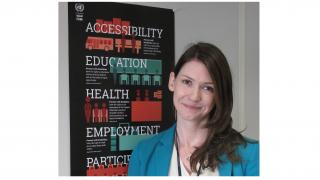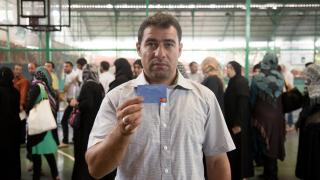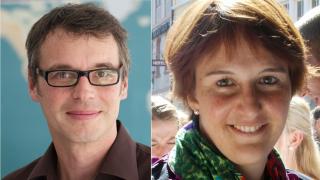
Myth 1: the world’s population is exploding
In fact: whilst the global population may yet reach nine billion in 2050, this trend is predicted to level off by the end of the 21st century. An unprecedented decline in fertility rates in recent decades has seen the number of children born per woman fall from 4.5 in the 1970s to 2.5 today. Female education, access to family planning and a reduction in child mortality have all contributed to women having fewer children.
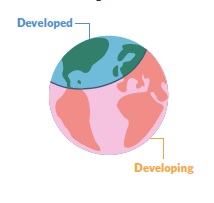
Myth 2: the world is split between developed and developing countries
In fact: there are a variety of stages along the spectrum of global development. Other commonly-used labels include middle-income countries, fragile and conflict-affected states, least developed countries and emerging economies. The language we use influences debates around who should receive aid. With an economy worth $2trn and the largest share of the world’s poor, how would you describe India?
Myth 3: infectious diseases are the world’s biggest killers
In fact: just one – HIV/AIDS – appears in the World Health Organization’s leading causes of death between 2002 and 2012. By far the biggest killer was heart disease, which caused 3 in every 10 deaths. This issue affects rich and poor countries alike, with the latter particularly affected by growing obesity levels. The Overseas Development Institute states that the majority of overweight people now live in developing countries, with factors including rising incomes and poor diet.
Myth 4: economic growth is the panacea for fighting poverty
In fact: GDP alone is not a sufficient indicator of development. Nigeria’s GDP in 2014 was Africa’s largest and ranked 26th globally. Yet it came 152nd out of 187 states on the UN’s Human Development Index. From Bhutan’s gross national happiness measure to Oxfam’s suggestions for tackling inequality, policymakers everywhere are searching for new answers to the age old dilemma of the fair distribution of resources.

Myth 5: there’s not enough food for everyone
In fact: more than enough is produced globally, but it just doesn’t reach everyone who needs it. One-third of all food produced for human consumption is wasted every year – that’s 1.3 billion tonnes lost while 805 million people go hungry. The UN estimates that 80 per cent of hungry children in the developing world live in countries that produce food surpluses.
Myth 6: everyone is getting older
In fact: this depends entirely on where in the world you live. In Rwanda, those aged 18–35 make up to 40 per cent of the total population. Whereas in Denmark, Germany and Italy, their representation was closer to 18 per cent. While the global average life expectancy has steadily increased to 71 in 2013 (up from 65 in 1990), there are also more young people aged 10–24 today than at any other time in history.
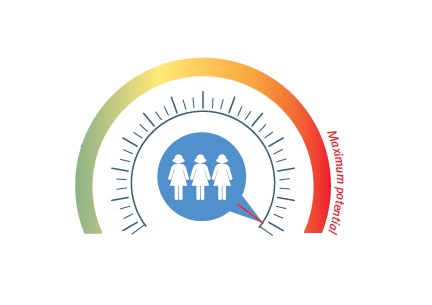
Myth 7: countries won’t achieve their maximum potential without women
In fact: gender equality is an important goal in and of itself. It should go without saying that a country cannot reach its full economic or developmental potential if half of its population is unable to reach theirs. Enabling women to take control of their lives, claim their rights and contribute to wider society should be treated as both an end and a means of development.
Myth 8: a lot of British aid money just gets wasted
In fact: there are a number of mechanisms set up to avoid this. For example, the Independent Commission for Aid Impact, which reports to Parliament, closely scrutinises British aid for its effectiveness and value for money. This view also ignores the vast good achieved by the majority of UK aid: a child’s life is saved every two minutes thanks to immunisation and in just one year the UK helped 20 million people access clean water.

Myth 9: the biggest recipients of refugees are Western nations
In fact: just one (depending on your perspective), appears in the UN Refugee Agency’s list of the 10 major refugee hosting countries. For the first time Turkey has become host to the single biggest refugee population with 1.59 million, mostly Syrians, just beating Pakistan with 1.51 million, mostly Afghans. The rest of the top 10 reads as a rough guide to some of the world’s most unstable regions: Lebanon, Iran, Ethiopia, Jordan, Kenya, Chad, Uganda and China.
Myth 10: the Sustainable Development Goals only concern poor countries
In fact: the proposed framework to replace the Millennium Development Goals will be universal, affecting everyone from Australia to Zimbabwe. There are a range of ambitious goals that will challenge all nations, from access to sustainable energy to the pursuit of gender equality. It is also designed to “leave no one behind”, which means that a goal will not be considered achieved until it has made progress across the whole population.






